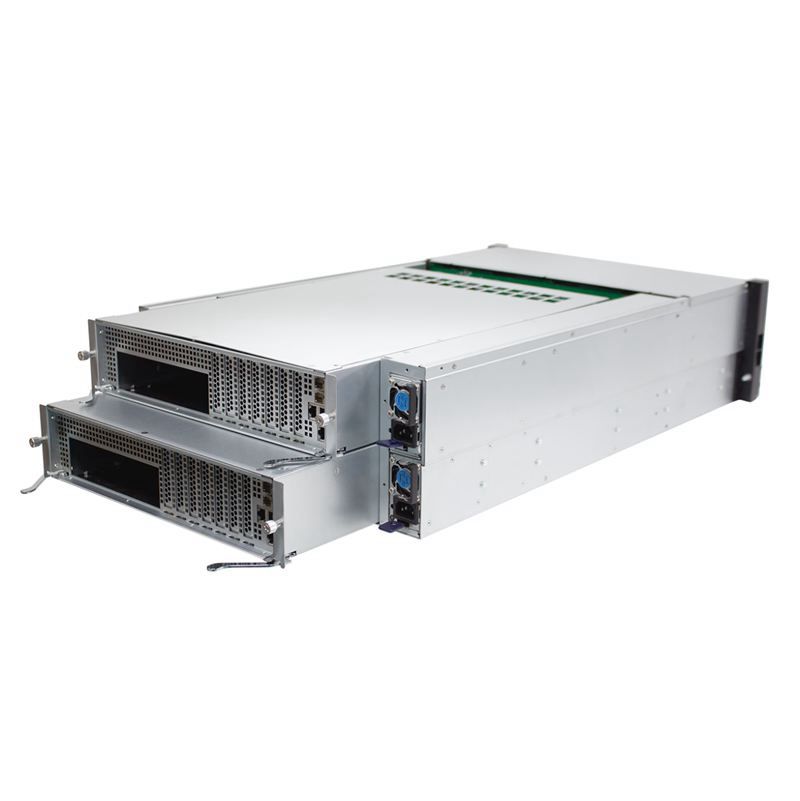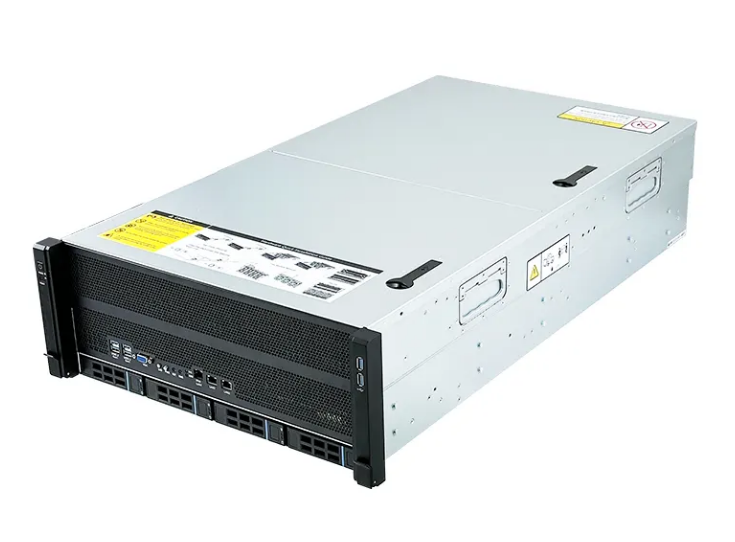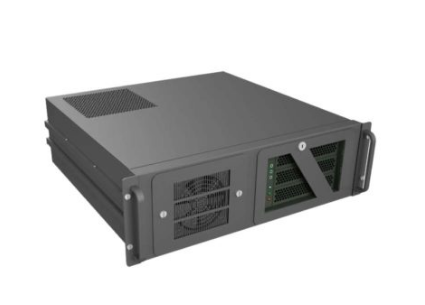What is a Dual-Node Server? Definition, Benefits & Use Cases
1. Introduction
Do you have too many computers? Are they taking up too much space? Do they cost too much money to run? Many businesses have these problems. It's hard to keep up with all the computers needed today. [^8] They take up space and use a lot of power. This costs you money and makes things hard.
But there is a smart answer. It is called a dual-node server.
Imagine a box, like a computer case. But inside this one box, there are two whole computers. They work by themselves, but they share some things. This is what a dual-node server is. It is like getting two computers for the space of one!
This article will tell you all about dual-node servers. You will learn how they work. You will see why they are better than old-style servers. And you will find out how they can help your business. We are experts in making these servers. We know how to make them strong, fast, and save you money.

2. How Does a Dual-Node Server Work?
Let's look inside a dual-node server. It has two brains inside one body. These brains are called nodes. Think of each node as a full computer. Each one has its own:
- Brain (CPU): This is the part that thinks and does the work. Dual-node servers can have strong brains like Intel or AMD CPUs.
- Memory (RAM): This is where the computer keeps things it is working on right now.
- Storage: This is where the computer keeps all its files. Dual-node servers can use fast storage like NVMe drives.
But, these two nodes share some things too:
- Power: They both use the same power to run.
- Cooling: They share fans to stay cool.
This sharing is smart. It means you need less stuff to run two computers. You save space and money.
Think of building blocks. You can put two blocks together. They are still two blocks, but they are close together. Dual-node servers are like this. You get two servers in one space. They fit in a standard rack in your computer room. They are easy to use and manage.
Key Parts of a Dual-Node Server:
| Part | What it does |
|---|---|
| Compute Nodes | The two "brains" of the server, like two computers in one box |
| Shared Power | One power source for both nodes |
| Shared Cooling | One cooling system for both nodes |
We make top-quality dual-node servers. Our servers use hot-swappable nodes. This means if one node needs fixing, you can take it out and put a new one in without turning off the whole server. This keeps your work going all the time. We also use redundant power supplies. This means if one power supply stops working, another one takes over. Your server keeps running, no problem.
3. Benefits of Dual-Node Servers
Why use a dual-node server? It's like getting more for less. You get many good things.
More Power in Less Space: Imagine you have two big computers. They take up lots of room. Now, imagine putting them into one box. That's what a dual-node server does. You get two times the computer power in the space of one server. This is called high density. If your computer room is full, this is a big help.
Save Money: Less space is good. But you also save money. Dual-node servers share power and cooling. You use less power overall. This means lower electricity bills. Our energy-efficient cooling systems are designed to keep servers cool without wasting power. This saves even more money over time.
Easy to Grow: Need more computer power later? No problem. With dual-node servers, it's easy to grow. You can add more nodes as you need them. You don't have to change your whole setup. Our rack-optimized design makes it simple to add servers to your racks.
Always Working: What if a server breaks down? With old servers, your work stops. But dual-node servers can keep going. They are fault-tolerant systems. If one node has a problem, the other node keeps working. This is called high availability. Your important work keeps running, no matter what. This is super important for things that must always be on.
Benefits in Simple Words:
| Benefit | What it means for you |
|---|---|
| High Density | More power, less space |
| Cost Efficiency | Lower power bills, save money |
| Scalability | Easy to add more power when you need it |
| High Availability | Servers keep working even if something goes wrong |
We focus on making reliable servers. We know your work is important. Our servers are built to last and keep you running smoothly.
4. Use Cases
Where are dual-node servers used? They are very useful in many places.
Big Computer Clouds: Cloud companies like AWS and Azure use many, many servers. They need to fit a lot of power in big buildings. Dual-node servers are perfect for them. They can run many virtual machines for their customers, all in less space. These are called multi-tenant environments.
Virtual Machine Centers: Many businesses use virtualization. This means making fake computers inside real computers. It helps them use their servers better. Dual-node servers are great as virtualization hosts. They can run many virtual computers at once, smoothly and quickly.
Super Fast Computers: Some work needs very fast computers. Like making AI or doing science. This is called HPC (High-Performance Computing). Dual-node servers can be made super powerful for these tasks.
Computers on the Edge: Sometimes, you need computers in places that are not big computer rooms. Like cell phone towers, or stores. This is called edge computing. Dual-node servers can be small and strong enough for these places. They can use fast storage like NVMe to work quickly even in small spaces. They are good for things that need low latency, meaning very fast responses.
Where Dual-Node Servers Shine:
| Use Case | Why Dual-Node Servers are Great |
|---|---|
| Cloud Providers | High density and efficient for running many customer setups |
| Virtualization | Powerful hosts for running many virtual computers |
| HPC (AI/ML) | Can be built for extreme speed for demanding tasks |
| Edge Computing | Compact and strong for use in smaller, remote locations |
We build servers for all these uses. We can make servers just for your needs. Whether you need servers for a big cloud, a virtual center, or for fast computing, we have you covered.
5. Dual-Node vs. Alternatives
Are there other kinds of servers? Yes. How are dual-node servers different? Let's look at some other kinds.
Blade Servers: Blade servers are also made to save space. They are very dense, even more than dual-node servers in some ways. But they are often more complex. Blade servers often need special parts and setups. Dual-node servers use standard racks. They are often easier to use and work with existing systems. Blade servers can be proprietary. This means you are locked into one company's system. Dual-node servers are more open.
Single-Node Servers: These are the older, more common type. One box, one computer. They are often cheaper to buy at first. But they take up more space overall. And they are not as good for growing or saving power as dual-node servers.
Hyperconverged Infrastructure (HCI): HCI is a system that puts servers and storage together in a very tight package. It's good for some things. But dual-node servers focus more on just computer power. If you need lots of compute power fast, dual-node servers are often a better choice.
How Dual-Node Servers Compare:
| Server Type | Density | Cost (Initial) | Scalability | Complexity | Best For |
|---|---|---|---|---|---|
| Dual-Node Servers | High | Medium | Good | Medium | General high-density compute, virtualization |
| Blade Servers | Very High | High | Good | High | Extreme density needs |
| Single-Node Servers | Low | Low | Fair | Low | Basic workloads, cost-sensitive setups |
| Hyperconverged (HCI) | Medium | High | Fair | High | Integrated compute and storage |
We believe dual-node servers are often the best balance. They give you great power, save space and money, and are not too complex.
6. Key Considerations Before Buying
Thinking about buying a dual-node server? Here are some things to think about first.
What kind of work will it do? Dual-node servers are great for work that can be split up and done at the same time. This is called parallel processing. They are not as best if your work needs to store tons and tons of data on the server itself. If you have storage-heavy apps, you might need to think about other storage solutions along with your dual-node servers.
Is it new enough? Computer parts get better all the time. Make sure the server you buy uses new, fast parts. Look for servers that support PCIe Gen5. This is a very fast way for parts to talk to each other. Also, check for NVMe support for super-fast storage.
Who makes it? Some big companies make servers. Dell and HPE are two big names. They have their own systems like Dell PowerEdge MX. But you can also get servers that use open standards. These are systems that many companies can use and work with. The Open Compute Project is one example. Our servers are built to be open and flexible. We use standards that work with many systems. We want to give you choices, not lock you in.
Questions to Ask Before Buying:
| Question | Why it's important |
|---|---|
| What workloads will it run? | To make sure dual-node is the right fit |
| Does it support PCIe Gen5/NVMe? | For future speed and performance |
| Is it from a vendor with open standards? | To avoid being locked into one company's system |
When you choose us, you choose a server provider that focuses on your needs. We help you find the right server for your work. We make sure it is up-to-date and easy to use.
7. FAQs
Q: Is a dual-node server the same as a blade server?
A: No, they are not the same, but both are for saving space. Blade servers can be even smaller and denser. But they are often more complex and may need special setups. Dual-node servers use standard server racks and are often easier to manage and more open.
Q: What’s the typical cost difference vs. single-node?
A: At first, a dual-node server might cost a bit more to buy than two single-node servers. But over time, you save money. You save on power and cooling costs because you are sharing those resources. You also save on space, which can be very valuable in a computer room. In 2024, a dual-node server node might cost around $8,000, while a blade server node can be around $12,000 .
Q: Can I mix AMD and Intel nodes in one chassis?
A: Usually, no. Most dual-node servers are designed for nodes that use the same type of CPU, either all Intel or all AMD. But we can talk about your specific needs to see if there are options for you.
More Common Questions:
| Question | Simple Answer |
|---|---|
| Blade Server vs. Dual-Node? | Blade servers are denser but more complex; dual-node is simpler. |
| Cost vs. Single-Node? | Dual-node might cost more upfront but saves money in the long run. |
| Mix AMD and Intel? | Usually not, nodes in one server type are typically the same CPU. |
If you have more questions, just ask us! We are here to help you understand dual-node servers and see if they are right for you.
8. Conclusion
Dual-node servers are a smart way to get more computer power in less space. They give you high density, cost efficiency, and scalability. They are strong and reliable. They are perfect for many uses, from big clouds to fast computing jobs.
If you are tired of servers taking up too much space and costing too much money, dual-node servers are the answer. They offer you a better way to run your computers.
We are Toponechassis, your dual-node server solution maker. We make top-quality servers that are built to last and work hard for you. We focus on your needs and offer servers for all kinds of uses.
Ready to learn more? Explore our Dual-Node Server Solutions. Let us help you find the perfect dual-node server to boost your business today.
 Deploying DeepSeek Locally: Your Ultimate Hardware Guide
Deploying DeepSeek Locally: Your Ultimate Hardware Guide
 A Comprehensive Guide to DeepSeek and GPU Server Localization Deployment
A Comprehensive Guide to DeepSeek and GPU Server Localization Deployment
 The Ultimate Guide to Purchasing Custom Server Chassis: OEM & 1U Rack Solutions
The Ultimate Guide to Purchasing Custom Server Chassis: OEM & 1U Rack Solutions

